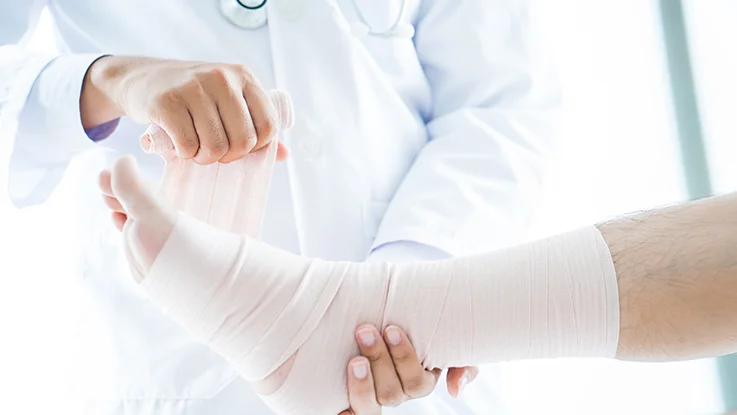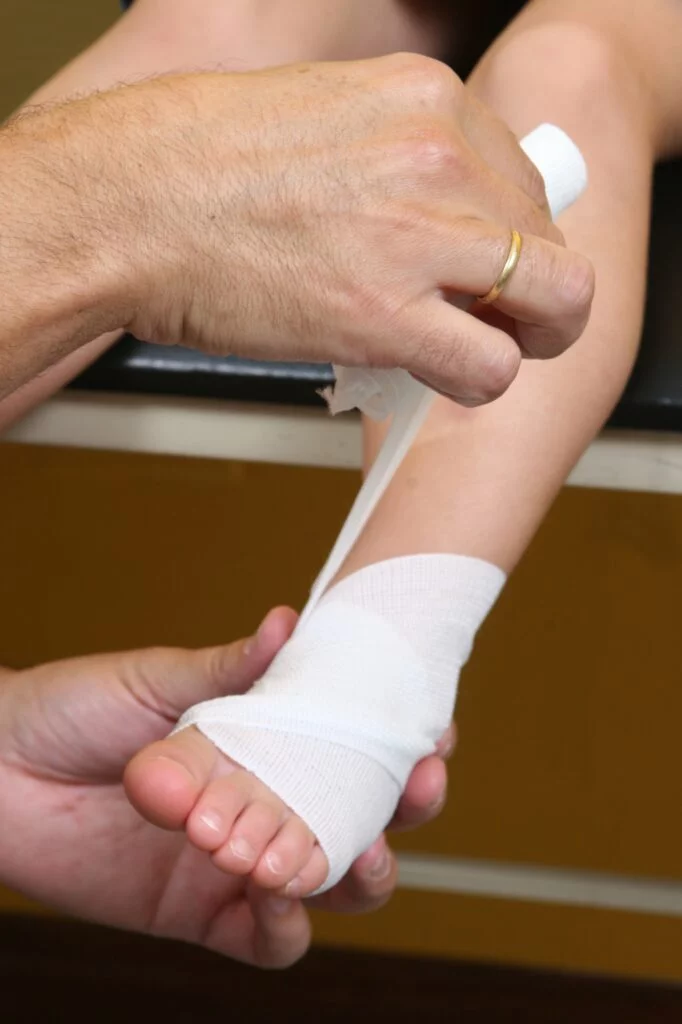Table of Contents
Hallux Rigidus
What is Hallux Rigidus?
Hallux rigidus is a disorder of the joint located at the base of the big toe. It causes pain and stiffness in the joint, and with time, it gets increasingly harder to bend the toe. Hallux refers to the big toe, while rigidus indicates that the toe is rigid and cannot move. Hallux rigidus is actually a form of degenerative arthritis. Because hallux rigidus is a progressive condition, the toe’s motion decreases as time goes on. In its earlier stage, motion of the big toe is only somewhat limited- at that point, the condition is called “hallux limitus.” But as the problem advances, the toe’s range of motion gradually decreases until it potentially reaches the end stage of “rigidus” where the big toe becomes stiff, or what is sometimes called a “frozen joint.” Other problems are also likely to occur as the disorder progresses.
What are the symptoms?
Early signs and symptoms include:
- Pain and stiffness in the big toe during use (walking, standing, bending, etc.)
- Pain and stiffness aggravated by cold, damp weather.
- Difficulty with certain activities (running, squatting)
- Swelling and inflammation around the joint.
As the disorder gets more serious, additional symptoms may develop, including:
- Pain, even during rest
- Difficulty wearing shoes because bone spurs (overgrowths) develop wearing high-heeled shoes can be particularly difficult
- Dull pain in the hip, knee, or lower back due to changes in the way you walk
- Limping, in severe cases
What Causes Hallux Rigidus?
The condition can occur on younger adults but most often affects those who are 50 years old or older. Common causes of hallux rigidus are faulty function (biomechanics) and structural abnormalities of the foot that can lead to osteoarthritis in the big toe joint. This type of arthritis the kind that results from “wear and tear” often develops in people who have defects that change the way their foot and big toe functions.
In some people, hallux rigidus runs in the family and is a result of inheriting a foot type that is prone to developing this condition. In other cases, it is associated with overuse especially among people engaged in activities or jobs that increase the stress on the big toe, such as workers who often have to stoop or squat. You podiatric foot and ankle surgeon can determine the cause of you hallux rigidus and recommend the best treatment.
Diagnosis of Hallux Rigidus
Treatment of Hallux Rigidus
Non-surgical Approaches
Treatment begins with anti-inflammatory medication to control the pain, swelling, heat, and redness of the degenerative arthritis. Special shoes that reduce the amount of bend in the toe during walking will also help the symptoms initially.
- Shoe modifications: Shoes that have a large box should be worn, because they put less pressure on your toe. Stiff or rocker-bottom soles may also be recommended. Most likely, you’ll have to stop wearing high heels.
- Orthotic Devices: Custom orthotics devices may improve the function of your foot.
- Physical Therapy: Ultrasound therapy or other physical therapy modalities may be undertaken to provide temporary relief.
When is Surgery Needed?
In some cases, surgery is the only way to eliminate or reduce pain. There are several types of surgery that can be undertaken to treat hallux rigidus. These surgical procedures fall into two categories:
- Some procedures reconstruct and “clean up” the joint. The surgeon removes the arthritis damage from the joint as well as any accompanying bone spurs, and then alters the position of one or more bones in the big toe. These procedures are designed to preserve and restore normal alignment and function of the joint as well as reduce or eliminate pain.
- More aggressive procedures are used when the joint cannot be preserved. These may involve fusion the joint, or removing part or all of the joint and, in some cases, replacing it with an implant, such as is done for the hip or knee. These procedures eliminate painful a stable foot. Our podiatric surgeon is trained to select a surgical procedure best suited to your particular condition and needs.
Precision Foot and Ankle Centers
Mild Deformities
- Oral anti inflammatory medication, Shoe recommendation
- OTC or custom orthotics
Moderate Deformities
- Custom orthotics
- Joint salvage surgery ie. Cheilectomy or 1st metatarsal osteotomy to decompress the joint
Severe Deformities
- If the cartilage or padding in the joint Is worn out more than 50% we recommend a bunionectomy with a total joint replacement. This is for more functional than a joint fusion and typically takes 6 weeks to heal.
- You are able to walk after the surgery in a surgical boot/shoe for 3 weeks and then return to your tennis shoes. The implant is made up of silastic and titanium and is very durable.



